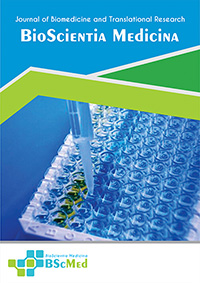Main Article Content
Abstract
Background: Spheno-orbital meningiomas (SOM) represent a distinct subgroup of meningiomas originating from the sphenoid wing, characterized by orbital extension, significant bony invasion, and hyperostosis. These tumors present diagnostic and therapeutic challenges due to their complex anatomical location near critical neurovascular structures and a notable tendency for recurrence. Understanding the specific clinical profile of SOM patients is essential for timely diagnosis and effective management strategies. This study aimed to delineate these characteristics within an Indonesian population.
Methods: A retrospective, descriptive, cross-sectional study was performed using medical record data from patients diagnosed with SOM between January 2012 and December 2022 at the Department of Neurosurgery, Dr. Hasan Sadikin General Hospital, Bandung, Indonesia. Data collected included patient demographics, case history (new vs. recurrent), presenting symptoms, neurological status (Glasgow Coma Scale), and radiological findings (lesion singularity/multiplicity). Total sampling was employed, and data were analyzed descriptively.
Results: The study included 252 subjects. A striking female predominance was observed (95.6%), with a mean patient age of 44.3 years (range 14-79). The vast majority were new cases (94.4%). Protrusion (proptosis) was the most frequent presenting symptom (79.0%), followed by headache (11.1%), blindness (5.2%), and blurred vision (4.0%). Most patients (97.2%) were fully conscious (GCS 15) upon admission. Radiological assessment revealed single lesions in 71.4% of cases.
Conclusion: In this large Indonesian cohort, SOM predominantly affected middle-aged females and typically presented with proptosis. Awareness of this distinct clinical signature is crucial for improving diagnostic accuracy and facilitating prompt, comprehensive management. The findings underscore the need for high clinical suspicion, particularly in female patients presenting with orbital symptoms.
Keywords
Article Details
As our aim is to disseminate original research article, hence the publishing right is a necessary one. The publishing right is needed in order to reach the agreement between the author and publisher. As the journal is fully open access, the authors will sign an exclusive license agreement.
The authors have the right to:
- Share their article in the same ways permitted to third parties under the relevant user license.
- Retain copyright, patent, trademark and other intellectual property rights including research data.
- Proper attribution and credit for the published work.
For the open access article, the publisher is granted to the following right.
- The non-exclusive right to publish the article and grant right to others.
- For the published article, the publisher applied for the Creative Commons Attribution-NonCommercial-ShareAlike 4.0 International License.





